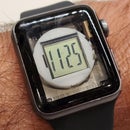Introduction: Brake Drum Blacksmith Forge
Step 1:
This is the basic design. A 2" floor flange was bolted to the underside of the brake drum to which a 2" coupler was used to attach it to a 2" T-connector. A longer coupler was attached to the side to accept the hair dryer and a bottom pipe was attached to the bottom to collect the ash. This is usually capped with a 2" cap so the air can't escape that direction but I didn't want to have to wait until the forge cooled to unscrew the cap and empty the ash and I was concerned the cap would become permanently attached by rust since the forge would be stored outside in the rain. I'll show you how we handled that part.
Note: The brake drum was free but it took visits to several garages to find it because brake drums are harder to find now that disc brakes are becoming more common on the rear wheels of new cars. A large brake rotor with a large hub will work but the hub will still not be as large as even an average-sized brake drum.
Step 2:
The forge was designed to be very basic and modular so it could be broken down easily for storage so we just used three cinder blocks for the base.
Step 3:
Instead of capping the bottom pipe, we used a paint can filled with water to catch the ash and keep the air from the hair dryer from escaping through the bottom.
Step 4:
To prevent coal from falling through the 2" pipe opening, we used a small 3/4" pipe floor flange as our "grate". It just sits loosely in the bottom but it catches the edge of the brake drum hole perfectly so it can't be accidentally pushed aside while stoking the fire and allow hot coal to fall through the opening.
Step 5:
I found out the secret to maintaining a nice, hot fire without burning up your coal too quickly is to regulate the flow of air from the hair dryer using either a mechanical, adjustable valve or an electrical rheostat (adjustable resistor) and to be able to completely stop the airflow between firings to save your coal. That's why hand-cranked blowers are ideal for blacksmithing but they are big, heavy, expensive and hard to find. Even having the hair dryer on low is too much air if not regulated. I wanted to use a light dimming extension cord like the one found here but they didn't have one at my local Home Depot so I wired up this Leviton wall-mounted, light dimmer switch to the male and female ends of a heavy duty extension cord and installed it inside an outdoor junction box. This model is a little more durable than your typical dimmer switch so I decided to use it so it could be turned on and off using your foot. I used one of those unbreakable nylon faceplates to cover it and screwed the entire junction box to a scrap piece of wood.
Step 6:
Coal can be expensive to buy online with the shipping costs if you cannot find some locally but luckily a local blacksmith gave us some to get started :)
Step 7:
The hardest part was getting the fire started! I found out the easiest way is to use 3 or 4 Match Light charcoal briquettes to heat up the raw coal to ignition but we didn't have any so after trying for 30 minutes or so to get it started using balled-up paper I finally cheated and used a small piece of a fire starter log.
Step 8:
Finally it caught and the forge worked beautifully!
UPDATE: The rubber coupler for the hair dryer was a little too close to the forge and got very hot so I replaced it with a 6" long piece of 2" pipe and shoved a smaller hair dryer into the end of it as you can see from the last picture. It stayed much cooler that way.
Step 9:
This is our temporary "anvil" until we get a piece of railroad track nailed to a stump to use as a makeshift anvil. If we stick with this hobby very long and get seriously into it then I can see where we might buy or build a complete blacksmithing table forge with a hand-cranked blower and also buy a real anvil but in the meantime this will suit us just fine. Thanks for looking!













